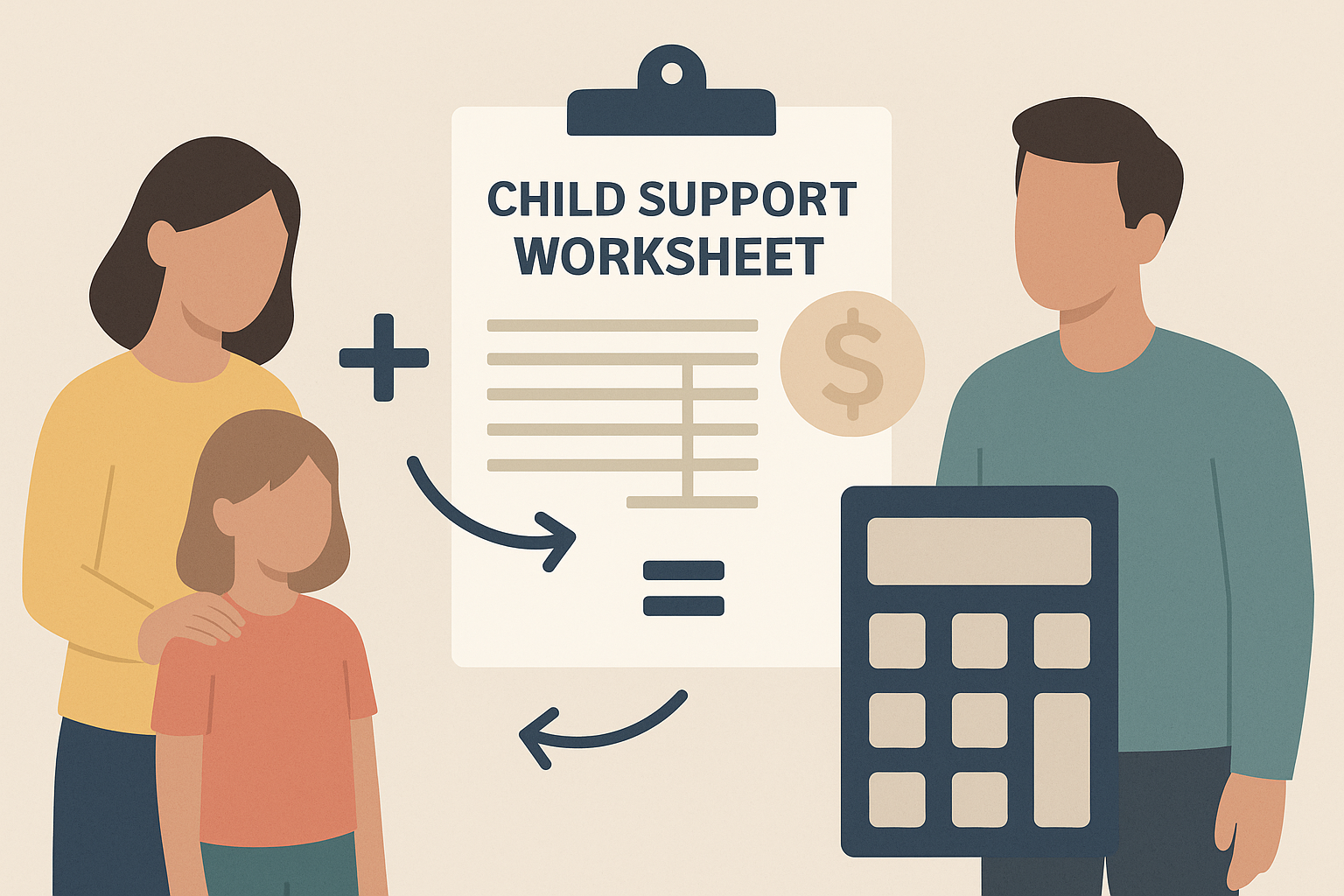Child support is one of the most important (and sometimes stressful) parts of divorce or custody conversations—because it impacts your child’s daily life.
But most parents don’t know how it’s actually calculated.
It’s not just a guess. It’s not based on one person’s opinion. And it’s definitely not “one size fits all.”
Let’s walk through how it really works.
Georgia Uses a Child Support Worksheet
Sounds technical, but it’s really just a structured formula that helps the court determine a fair amount of support based on:
1. Both parents’ income
2. Who the child lives with most of the time
3. Expenses like health insurance and daycare
4. Time spent with each parent
5. Special needs, if applicable
Think of it like a budgeting calculator—but for your child’s needs.
Step 1: Add Up Both Incomes
The first step is figuring out the combined gross income of both parents. That includes:
- Wages or salary
- Bonuses or tips
- Self-employment income
- Unemployment or disability benefits
- Even some investment income
🧮 Example:
If one parent earns $3,500/month and the other earns $4,500/month, the combined income is $8,000/month
Step 2: Use That Number to Find the Basic Support Amount
Georgia has a table that shows what the expected child support obligation should be based on combined income and number of children.
Let’s say for one child at $8,000/month total income, the base obligation is $1,000/month.
This number is then divided based on each parent’s percentage of income.
So if one parent earns 60% of the combined income, they would be responsible for 60% of that $1,000.
Step 3: Adjust for Other Expenses
This is where real life comes into play.
📍 Add-ons and adjustments can include:
- Who pays for the child’s health insurance
- Childcare or after-school costs
- Special needs like therapy or tutoring
- Travel costs if parents live far apart
The worksheet adjusts the final number to reflect these real expenses.
Step 4: Account for Parenting Time
While Georgia doesn’t automatically reduce child support based on time spent with the child, the court can consider it in some cases.
If both parents have near-equal parenting time and share costs fairly, the judge might agree to lower the amount owed—or order shared expenses instead.
💬 But don’t assume parenting time = payment reduction. It depends on the full picture.
Step 5: Deviations (When the Numbers Don’t Tell the Whole Story)
Courts can approve what’s called a “deviation” from the standard number. This means raising or lowering the amount based on unique circumstances.
That could include:
- Extremely high or low income
- Private school tuition
- Special medical conditions
- One parent supporting other children
📌 These are not automatic—you must request and justify them to the court.
Why It’s Smart to Get Help With the Worksheet
It may look like a simple form, but one mistake—or leaving something out—can cause:
- Overpayments or underpayments
- Denied agreements
- Delays in court approval
- Financial hardship for the parent or child
We help clients complete and customize this worksheet correctly, and explain the “why” behind the numbers to the judge if needed.
You Want What’s Best for Your Child. So Do We.
At Catherine Ryan Law, we believe that child support should be fair, predictable, and tailored to your actual situation—not just plugged into a calculator and called a day.
👉 Click here to schedule a consultation with Catherine Ryan
We’ll walk you through Georgia’s child support process with clarity and care—so you know exactly what to expect and how to protect your child’s future.

